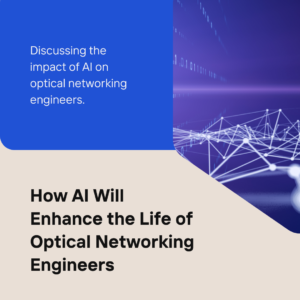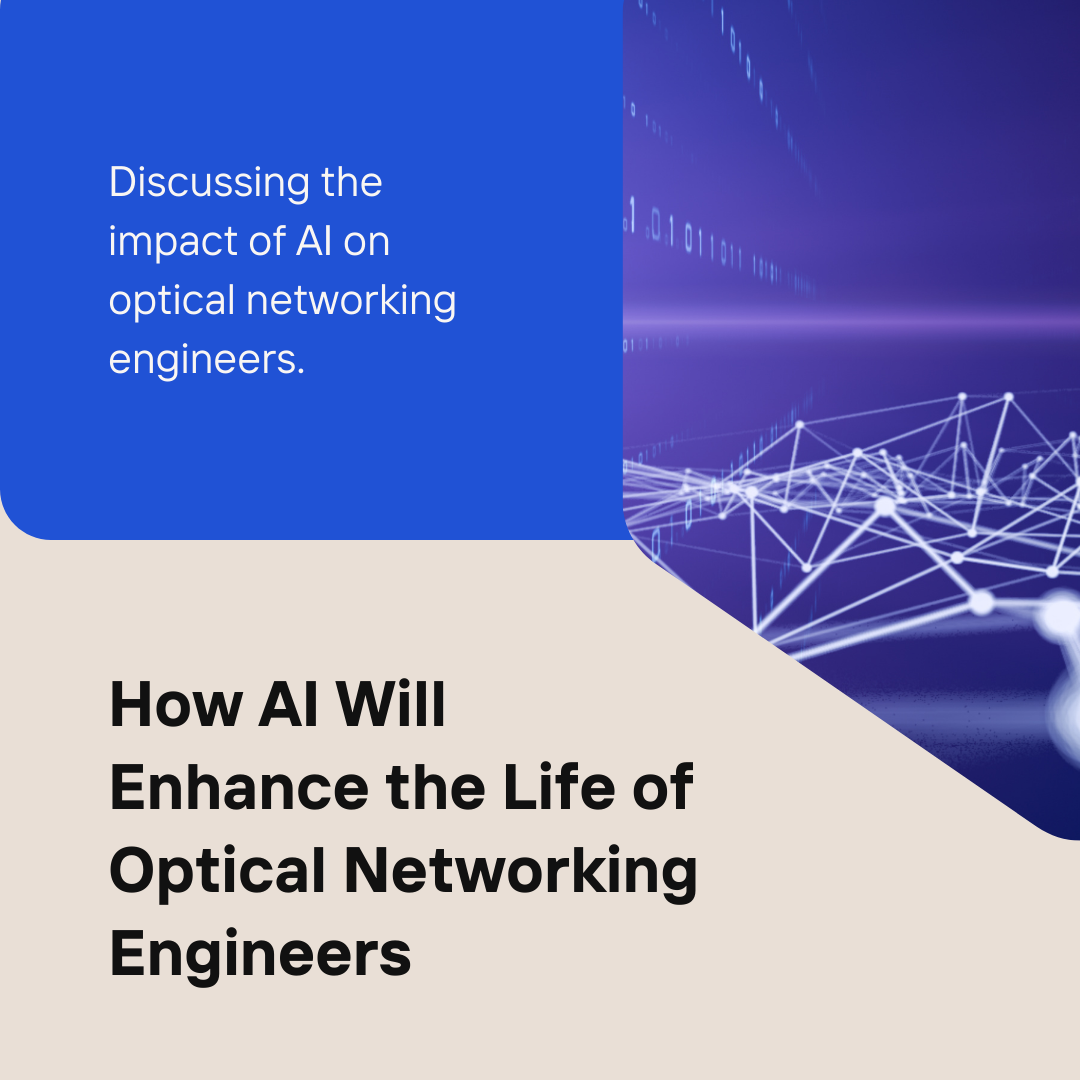The integration of artificial intelligence (AI) into optical networking is set to dramatically transform offering numerous benefits for engineers at all levels of expertise. From automating routine tasks to enhancing network performance and reliability, AI promises to make the lives of optical networking engineers easier and more productive. Here’s a detailed look at how AI is transforming this industry.

Automation and Efficiency
One of the most significant ways AI is enhancing optical networking is through automation. Routine tasks such as network monitoring, fault detection, and performance optimization can be automated using AI algorithms. This allows engineers to focus on more complex and innovative aspects of network management. AI-driven automation tools can identify and predict network issues before they become critical, reducing downtime and maintenance costs.Companies like Cisco are implementing AIOps (Artificial Intelligence for IT Operations), which leverages machine learning to streamline IT operations. This involves using AI to analyse data from network devices, predict potential failures, and automate remediation processes. Such systems provide increased visibility into network operations, enabling quicker decision-making and problem resolution
Enhanced Network Performance
AI can significantly enhance network performance by optimising traffic flow and resource allocation. AI algorithms analyse vast amounts of data to understand network usage patterns and adjust resources dynamically. This leads to more efficient utilisation of bandwidth and improved overall network performance . Advanced AI models can predict traffic congestion and reroute data to prevent bottlenecks. For instance, in data centers where AI and machine learning workloads are prevalent, AI can manage data flow to ensure that high-priority tasks receive the necessary bandwidth, thereby improving processing efficiency and reducing latency
Predictive Maintenance
AI’s predictive capabilities are invaluable in maintaining optical networks. By analysing historical data and identifying patterns, AI can predict when and where equipment failures are likely to occur. This proactive approach allows for maintenance to be scheduled during non-peak times, minimising disruption to services Using AI, engineers can monitor the health of optical transceivers and other critical components in real-time. Predictive analytics can forecast potential failures, enabling preemptive replacement of components before they fail, thus ensuring continuous network availability .
Improved Security
AI enhances the security of optical networks by detecting and mitigating threats in real-time. Machine learning algorithms can identify unusual network behavior that may indicate a security breach, allowing for immediate response to potential threats.AI-driven security systems can analyse network traffic to identify patterns indicative of cyber-attacks. These systems can automatically implement countermeasures to protect the network, significantly reducing the risk of data breaches and other security incidents.
Bridging the Skills Gap
For aspiring optical engineers, AI can serve as a powerful educational tool. AI-powered simulation and training programs can provide hands-on experience with network design, deployment, and troubleshooting. This helps bridge the skills gap and prepares new engineers to handle complex optical networking tasks Educational institutions and training providers are leveraging AI to create immersive learning environments. These platforms can simulate real-world network scenarios, allowing students to practice and hone their skills in a controlled setting before applying them in the field .
Future Trends
Looking ahead, the role of AI in optical networking will continue to expand. Innovations such as 800G pluggables and 1.6T coherent optical engines are on the horizon, promising to push network capacity to new heights. As optical networking technology continues to advance, AI will play an increasingly central role. From managing ever-growing data flows to ensuring the highest levels of network security, AI tools offer unprecedented advantages. The integration of AI into optical networking promises not only to improve the quality of network services but also to redefine the role of the network engineer. With AI’s potential still unfolding, the future holds exciting prospects for innovation and efficiency in optical networking.
References:
Unlock Premium Content
Join over 400K+ optical network professionals worldwide. Access premium courses, advanced engineering tools, and exclusive industry insights.
Already have an account? Log in here




